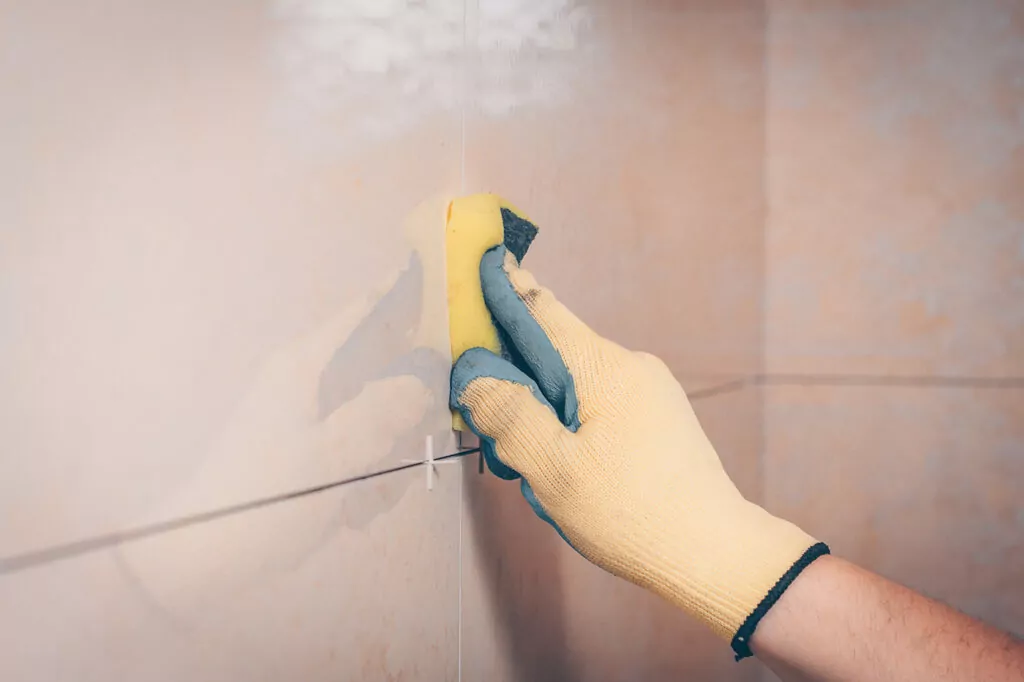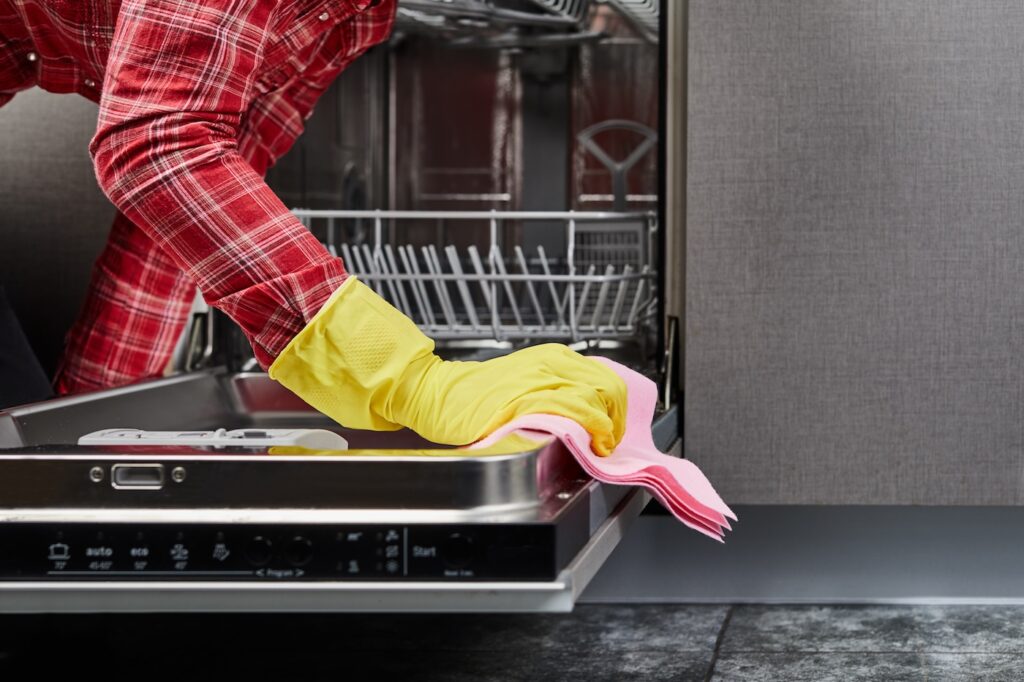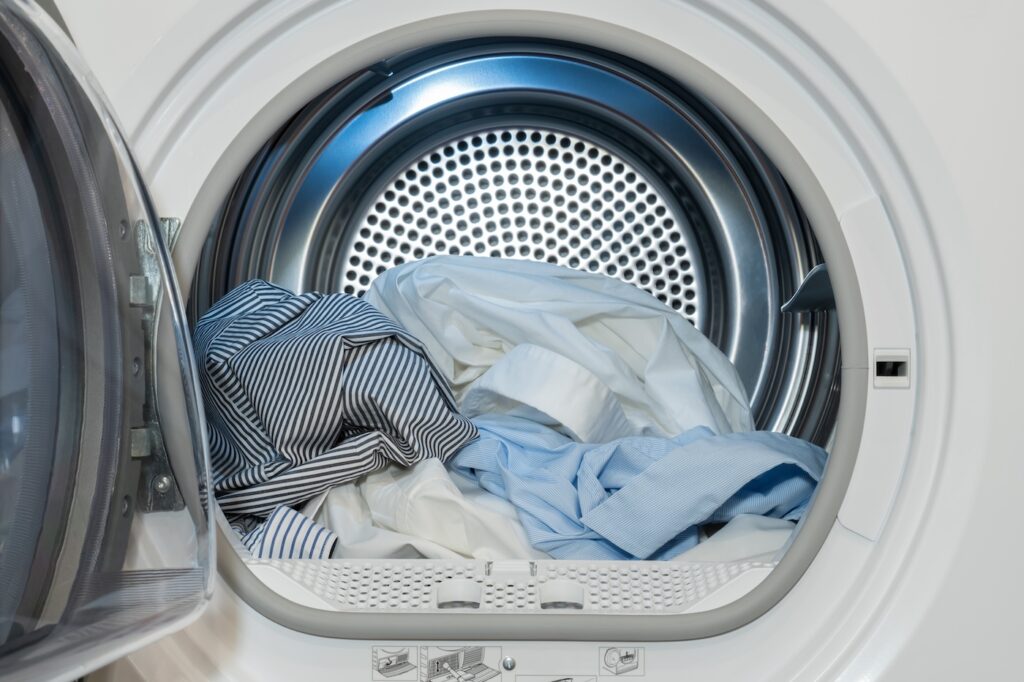Wallpaper during a remodel can add a touch of personality and style to any room. When it comes time to refresh your space, however, removing wallpaper can feel like a daunting task. The good news about removing wallpaper is that it doesn’t always have to be a messy process.
So, what is the best way to remove wallpaper? First, it will depend on the condition of the adhesive that’s sticking it to the wall. Second, it will depend on what materials and tools you have. Whether you’re learning how to remove wallpaper borders, how to remove wallpaper glue, how to remove wallpaper from drywall, or how to remove wallpaper quickly, this guide will equip you with knowledge and best steps to take on your first time doing this DIY project!
Tools and Materials
Before you dive into learning how to remove old wallpaper, make sure you gather the necessary tools and materials, many of which you can get at stores like Home Depot or Amazon:
- Warm water
- Rigid putty knife
- Spray bottle
- Sponge
- Drop cloths
- Painter’s tape
- Scoring tool (optional)
- Wallpaper steamer (optional)
- White vinegar (optional)
- Fabric softener (optional)
- Commercial wallpaper stripper (optional)
- Safety glasses (recommended)
- Dust mask (recommended)
Remember: If you’re wanting to know how to remove wallpaper quickly, realize that the specific tools you’ll need will vary depending on the removal method you choose to use.
Preparation for Wallpaper Removal
Even the best way to remove wallpaper quickly requires some prep work. When starting your wallpaper removal process, do the following to get your space ready:
- Clear the room: Part of learning how to remove old wallpaper is learning how to properly prepare your space! First, remove furniture from the room, or push it to the center. Cover it with drop cloths, and secure the cloths to the furniture with painter’s tape if necessary.
- Lay drop cloths. Removing older types of wallpaper will always involve water—sometimes combined with glue—falling to your floor and baseboards. You’ll always want to cover up these exposed areas, especially if you have carpet. Trying to remove it later could become a huge headache!
- Use electrical outlet covers. Given that wallpaper removal often involves liquid, you may want to purchase outlet covers to keep all your electrical work safe from the process.
- Identify the wall type and wallpaper: Knowing the type of wall (e.g. drywall vs. plaster wall) and wallpaper (e.g. pre-pasted wallpaper vs. vinyl wallpaper vs. strippable wallpaper) is essential if you’re needing to know how to the best way to remove wallpaper. You can usually test a small, inconspicuous area in the corner to see how easily the old layer of wallpaper peels off. If it comes off easily and keeps coming off, great—you likely have a more recent type of strippable wallpaper. If not, you’ll need to use one of the more complicated methods to remove it, which is outlined below.
If you’re unsure about the type of wallpaper you have, reading online resources or consulting a professional at your local hardware store can be helpful. If you can avoid needing to learn how to remove wallpaper glue, you’re in good shape for this project!
Removing Strippable Wallpaper
Consider yourself lucky if you have strippable wallpaper—it makes the process of wallpaper very simple! This type of wallpaper is designed for easy removal and requires minimal effort. Here’s a step-by-step guide.
1. Check the Edges

Start by gently peeling a corner or seam of the wallpaper. If it peels away easily in large sheets, you likely have strippable wallpaper.
2. Loosen the Corners

Use your fingernail or a putty knife to carefully lift a corner or edge that you identified in Step 1. Once a small section is loose, gently but firmly pull the wallpaper upward and toward yourself in a slow peeling motion.
3. Pull the Strips

Continue peeling the wallpaper off in large strips, working from top to bottom. If you encounter resistance, don’t force it. You might need to dampen the wallpaper or switch to a different removal method for stubborn areas.
4. Remove Wallpaper Paste Residue (Optional)

Once the wallpaper is removed, there might be some leftover wallpaper paste on the wall. You can wipe it clean with a damp sponge or use a mild wallpaper removal solution according to the manufacturer’s instructions.
Removing Peelable Wallpaper
Peelable wallpaper is similar to strippable wallpaper, but it comes in two layers—a top vinyl layer and a paper backing. Here’s how to remove it.
1. Remove Front Layer

Carefully peel off the top vinyl layer using the same technique as removing strippable wallpaper—again, start with a corner, and pull up to remove the sheet’s entire top layer.
2. Remove Back Layer

Once the top layer is removed, you’ll be left with the paper backing. This layer might be more challenging to remove and might require additional tools or methods.
3. Strip With Water or Wallpaper Stripper

If your back layer is difficult to remove, you can try dampening the paper backing with warm water and a sponge to loosen the wallpaper adhesive. If water proves ineffective, consider using:
- A commercial wallpaper stripper solution following the product instructions.
- Steam with a steam cleaner—see the “Using Steam to Remove Wallpaper” section below!
4. Scrape and Clean

After loosening the adhesive, use a putty knife to carefully scrape away the remaining paper backing. Be gentle to avoid damaging the drywall underneath, but be sure to use enough elbow grease if needed. Finally, wipe down the wall with a damp sponge to remove any leftover residue.
How To Remove Old Wallpaper
Removing old wallpaper, especially wallpaper that’s been up for many years, can be the most challenging task. Here’s a step-by-step approach, including how to remove wallpaper glue.
1. Mix the Solution

There are several solutions you can use to remove old wallpaper. A popular option is a mixture of hot water and white vinegar (equal parts). You can also try a solution of warm water and fabric softener (mix one part fabric softener with three parts water).
2. Apply the Solution

Fill your sprayer bottle with the chosen solution, and liberally spray one small section of the wallpaper at a time. Let the solution sit for 10-15 minutes to allow it to penetrate the adhesive.
3. Scrape the Wallpaper

Once the solution has had time to work, use a scoring tool (optional) to create small perforations in the wallpaper surface. This will help the solution penetrate further. Then use a putty knife or scraper to carefully scrape away the loosened wallpaper. Work in small sections, and reapply the solution as needed.
4. Rinse and Repeat

Continue applying the solution, scraping the wallpaper, and rinsing the wall until all the wallpaper is removed. Be patient, as this process can be time-consuming, especially for stubborn wallpaper.
5. Remove Wallpaper Glue Residue

Once the wallpaper is removed, there might be leftover wallpaper glue residue on the wall. You can use a damp sponge or a mild wallpaper removal solution to clean it according to the manufacturer’s instructions.
Using Steam to Remove Wallpaper
For particularly stubborn wallpaper, a wallpaper steamer can be a lifesaver. Even if you’re wanting to learn how to remove wallpaper from drywall or how to remove a wallpaper border, here’s how steam can help.
1. Prepare the Steamer

Fill the wallpaper steamer with water according to the manufacturer’s instructions, and allow it to heat up.
2. Apply Steam to Wallpaper

Hold the steamer plate close to the wallpaper surface, but try not to touch the surface directly. Move the steamer in a slow, circular motion, allowing the steam to penetrate the adhesive.
3. Remove the Wallpaper

As the steam loosens the adhesive, use a putty knife to carefully scrape away the wallpaper. Work in small sections, and avoid applying too much pressure to prevent damaging the wall underneath.
4. Rinse and Repeat

Continue steaming and scraping the wallpaper in sections until all the wallpaper is removed. Be patient and thorough, as some areas may require more steaming than others.
5. Remove Wallpaper Glue Residue

After removing the wallpaper, you might still have some leftover wallpaper glue residue. You can use a damp sponge or a mild wallpaper removal solution to clean the wall following the manufacturer’s instructions.
When to Hire a Tasker
Removing wallpaper can be a rewarding DIY home improvement project, but it also requires patience and effort. The best method depends on the type of wallpaper you have and its condition—if you’re dealing with old wallpaper or a particularly large room, the process can be both time-consuming and physically demanding. Taskers can help with difficult wallpaper removal, whether you have a large- or multi-room project or are simply concerned about damaging your wall. They’ll take care of the hard work so you can focus on the fun part—planning your new decor!














